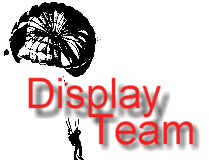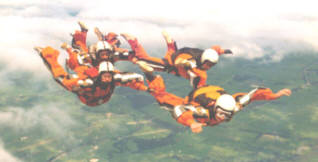|
|
|
|
The Golden Eagles
The Centre's official Display Team, The Golden Eagles, dominated the
parachute display scene in southern Australia for many years. It
performed at the Melbourne and Adelaide Agricultural Shows and many of the
regional Agricultural Shows. It was not until much later
that parachutes could be jumped into football ovals and eventually tennis
courts and the like.
Organised
as a professional Display Team, the team drew on Bill Molloy's
experience with the US Army Parachute Team, The Golden Knights,
and Claude's entrepreneurial marketing. The team dressed
in uniform clothing and jumpsuits manufactured by Southern Cross
Parachutes and were into showmanship. For special
occasions the team would turn up at the event and step from hired
limousines in gold lamé jumpsuits,
the ground-crew emerging from their limousine in white jumpsuits
to busily construct a fence around a packing area (spectators
were encouraged to take an interest in the parachutes and ask
questions, with one of the ground crew available to answer them or
provide a running commentary). Others in the ground crew made a display of pandering to
the display jumpers with drinks, etc., treating them as celebrities.
This approach guaranteed the team plenty of publicity and invitations
to the VIP festivities at night.
In
the beginning the team made mostly stacked - follow the leader -
team accuracy displays, using a large
orange target with each jumper landing within the target arms,
gathering his 'chute and moving to the end of a target arm off
the wind line to welcome the jumpers arriving after him.
Before the advent of relative work, if the team was jumping on an airfield
at an airshow, it did the opposite to target jumping; a bomb-burst. Exiting
the aircraft at 8,500ft trailing talc (later smoke), the team would track away
from each other with two team members landing on the piano keys
at each end of the runway and the others landing at designated
points at the extreme edge of the airfield either side of the
runway, demonstrating their ability track horizontally in free
fall. It was also used to convince aviation authorities that
the exit point could be corrected in free fall if the jumpers
found that the wind had changed since their assessment had been
made from the drifter drop.
The
Eagles first display was on
the 2nd of May 1966, they were invited to jump at a Royal Victorian Motor
Yacht Club event at Williamstown. The target was a buoy anchored
near the jetty. It was a contest run to FAI water-jump rules, with
the time taken from splash-down to touching the target buoy as the
test. Both Lenny Hunter and Bob Morrison splashed in beside
the buoy, placing their hand on the buoy as they touched down, Jim Cox took
third place with one and a half seconds from splash-down to touching, with Danny
Wright and Dave Lock deciding to land amongst the yachts with spectators
onboard. Claude and Jock Moir were on board the Commodore's yacht
acting as ground crew and waiting for the jumpers to splash-down so that they
could move from eating to drinking.
The
team progressed to freefall baton passes, freefall linkups and
then to freefall star formations. Exit height
was kept to the minimum to perform the show so that spectators
had more chance of seeing the jumpers clearly. As
the performance became more demanding, it was necessary for the
jumpers to show their freefall movement by leaving a trail to
draw the spectators' attention to the jumpers' trajectory.
In Australia it
is against the law to carry smoke flares in an aircraft, so the
team had large pockets on both legs of their jumpsuits that were
filled with talcum powder. It was surprisingly effective.
The jumpers unzipped the tops of the pockets as they climbed out
the door of the aircraft and this let the ground crew know that
the team was about to jump. To lessen the number
of complaints about neck pain, the commentator usually warned
the spectators not to look up until he told them to.
When he saw the powder trail, he would
tell the crowd to look up now and it was easy to see the powder trail
and recognise the aircraft and see the small blobs leaving the
aircraft. Later it became possible to obtain a waiver to use
pyrotechnic smoke on a parachute display and to this day it is necessary to
apply to the civil aviation authority for a waiver to do so.
In the early
days, displays were restricted to Air Shows on airfields and large country areas on broad acres. The civil
aviation authority gave its officials written directions not to trust
parachutists to land in smaller areas. The Eagles were instrumental
in having this attitude changed as they demonstrated their ability performing at Air
Shows in Victoria, South Australia, Tasmania and New South
Wales. The next step was to convince the authorities that
areas smaller than airfields were suitable for parachute displays and the team
than performed at Flemington Racecourse,
Moonee Valley Racecourse, Ballarat Racecourse and many other smaller country
racecourses, mostly for events other than horse races.
After a great
deal of effort by the Australian Parachute Federation, Agricultural Showgrounds,
which are usually about the size of three football grounds, were approved by the civil aviation authority for skydiving displays provided a
very stringent set of conditions were met. For many years the Golden
Eagles jumped regularly at the Melbourne Show (10 days), the Adelaide Show (6
days), Geelong Show (3 days), Ballarat Show (2 days), Bendigo Show (2 days),
Horsham Show (2 days) and the Lang Lang Rodeo (1 day). As the Golden Eagles
was primarily made up of Centre instructors, it was sometimes difficult to
supply enough personnel for so many displays. So highly
experienced display jumpers, sometimes from interstate, were often invited to take part in these displays.
Later, as
approvals for smaller dropzones became available, the Eagles began jumping into
small arenas like the Melbourne Cricket Ground, St. Kilda Football Ground,
Olympic Park and into the Yarra River alongside Melbourne's central business
district during the Moomba Festival.
Some of the
Eagles displays were water landings, in addition to the Williamstown display
mentioned above, there was the Australia Day Mardi Gras onto Eastern Beach,
Geelong and the Speedboat Races on Glenmaggi Weir and Lake Wallace.
Their
outstanding display with the landing in water was the 1965 Hobart
Regatta, held
at the finish of the Sydney to Hobart Yacht Race. The team wore wet
suits and were surprised at the higher fall rate and the sensitivity of movement
at the higher speed. There were more than 200,000 spectators on the
bank of the Derwent River and the teams reception was akin to what would
normally greet rock stars.
In
the 80's there were times when the team used larger aircraft and put together
large star formations into events like the Melbourne Show. On
one occasion, the 20-Way star broke and the jumpers were having difficulty
pulling the break together. Claude was the commentator and he
covered for the break by announcing immediately the star broke "And now the star
is converted to a horse-shoe in honour of the equestrian events" There
were times when the Eagles were asked to perform in other ways than skydiving
displays. The International truck hijacking was one such
event. There
were few professional commentators that Claude would trust with the microphone,
so if the regular show commentator did not have a flare for dramatic event
calling he would many times take on the job himself. He preferred
to jump but believed that the a parachuting display was as much about
entertainment as it was about promoting parachuting and so expected the
commentator to keep the crowd involved in the jump from jump-run until the
jumpers had landed and made their drive-round the enclosure perimeter and exited
the oval.
|
|
|
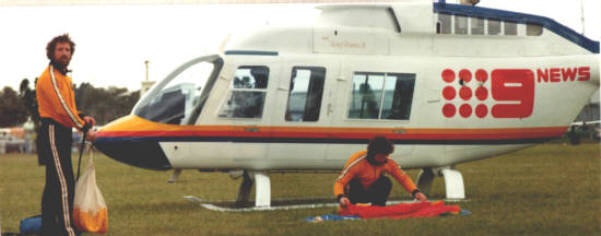 |
|
Ray
Foster packing for a display at Geelong Showground from the Channel 9
chopper |
|
|
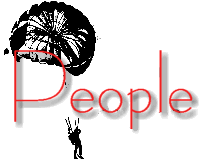 |
The
Golden
Eagles |
|
|
In
the beginning the team was made up of the Labertouche instructors but as
the team became more popular it was necessary to induct suitable jumpers
into the team. Until the research is finished many of
the team members will only have the date and place of their first
display with the team. |
Claude
Gillard
|
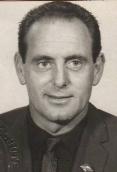
|
|
Then and now
|
|
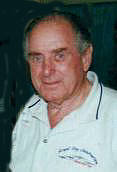
|
|
Claude
and Steve Filak made their first display jump together at
Labertouche from a Piper Tri-Pacer in January 1961. A
10 second delay from 2,000 feet.
As
sport parachuting grew and landing accuracy progressed from being
measured in hundreds of yards to centimetres, it was difficult to
convince government authorities that some parachutists had
mastered the art of landing accurately and could be trusted to
land in tight (small) areas.
Claude
played a leading role in changing the authority's attitude and
bringing more reasonable laws to display jumping.
When
he decided to earn a living from parachuting, it was necessary to
be a jack of all parachuting trades to make ends meet.
In the beginning, display jumping was mostly used as a promotion
for the parachute training school but as the civil aviation
regulations were eased and displays could be made into smaller
areas, they became an important part of the income stream, used to
finance the training, commerce and rigging sides of the
enterprise.
It
was some time before jumpers like Ian Handley, Grahame Hill and
Jim Cox realised that display jumping could be part of the
entertainment industry.
|
Steve Filak
|
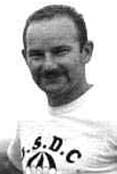
|
|
Then |
|
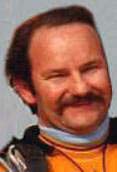
|
|
Steve was the Operations Officer
of the Golden Eagles. As the Eagles developed into a
highly professional team and found that even the best
commentators at big events had no knowledge of skydiving and
gave bland descriptions of the Eagles displays. If
Claude were not on the jump, he would take over the microphone
and do the commentary. Show Ringmasters recognised
that the informed commentary gave the display more spectator
appeal and would request Claude as the Event Commentator.
That became the norm and from then on the full responsibility
for the display operations fell on Steve's shoulders.
Steve had been the preferred
Display Jumpmaster since the team was formed. Choosing the
team exit point was critical in the days before high performance
parachute canopies and Steve a master in this area. Steve's
habit of always choosing the exit point for the worst possible
situation paid off when jumping into the Adelaide agricultural
show, Bruce Towers had a rotating malfunction. Bruce was
wearing a video camera on his helmet and calmly filmed the
malfunction before cutting away onto a small round
reserve. Steve's spotting paid off with Bruce landing on
the target.
Steve
was always prepared to turn his hand to whatever was needed on
the dropzone and as he was the fastest packer and most knowledgeable
equipment inspector, over time he added role of Centre Rigger to
his role of student continuation training. This
resulted in most of his parachuting being student supervision
and display jumping.
As Claude spent more and more
time overseas, Steve also took on a lot of the administration
tasks as well. A lot of budding sky gods owe him for
steering them through the basics.
He was the Golden
Eagles' "Chief of Operations". |
Lennie Hunter
|
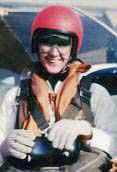
|
|
Then |
|
|
|
Lennie
was an all round jumper who performed well in competition and as a
"Fun Jumper".
A
quite young bloke when he took up parachuting, after completing the
Southern Cross Skydivers Instructor Course he became a self-confident
skydiver with an outgoing personality.
One
of the six skydivers who took part in the world-best 5-Way (6 person) baton pass at
Pakenham in 1963, he earned the title "Skydiver" at a time when
few in the world could aspire to that honour.
These
days, Lennie lives in the Darwin area and works out in the bush as an
electrician.
|
| Rick Meerkin
|
Lang Lang 3/67
|
Jimmie Davis
|
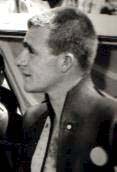 |
|
Then |
|
|
|
Jimmie
was an early member of the Golden Eagles and loved display jumping.
A
memorable moment we have of Jimmie was at the Hobart Regatta where the
Eagles made a water jump from 12,500 feet wearing wet suits.
The team was to make a 4-Way star but jumping wet suits with very little
drag gave them a very fast fall rate as each relative movement required
much less use of control surfaces than normal. Jimmie didn't make it
into the formation. The 250,000 spectators were ecstatic
about the jump and in the radio interview that was being broadcast on site
immediately following the jump, Jimmie was asked "How come you didn't
join the formation". He answered "We exited over the
Hobart Town Hall and the city below was such a beautiful site that I was
gawking at the scenery too long and I ran out of time" The
crowd went mad and cheered long enough to interrupt the
interview. There was radio not television but Jimmie was a very
popular guy in Hobart that night.
|
| Tony Rockley
|
Lang Lang Rodeo 3/67 &
7/4/69
|
| John Fraser
|
Pambula Show, NSW 3/2/68
|
| Jim Kemp
|
Pambula Show, NSW 3/2/68
|
| Bryn Hillman
|
Lang Lang Rodeo
15/4/68
|
| Tony Curl
U
|
Lang Lang Rodeo
15/4/68 20/10/1972 Geelong Show
|
Ray Williams
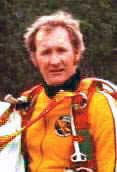 |
| 60's
and 70's |
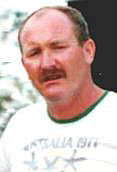 |
|
Ray
first jumped with the Golden Eagles at Coldstream in April 1969 and is a Jack of all trades in
skydiving. He spent some time in the USA working for Strong
Enterprises and 6 months in Malaysia setting up a parachute manufacturing
facility.
His
involvement in BASE jumping surprised many in the skydiving
establishment. His most outstanding venture in that field was
to hike through the Tasmanian forest to leap off Frenchman's Cap.
He
excelled as an FAI Judge and has judged a great number of World
Championships. For a number of years he was the only FAI Judge
to be rated in every parachuting discipline. These days he is a guru
amongst artistic event judges and is in demand as an artistic event
judge.
He
was APF Director Judging for 1981 and again from 1986 to 1994
He
is currently studying business administration full time and fitting
overseas judging assignments into his curriculum.
|
| Dennis Steinfort
|
Kilmore
Races 20/10/68 |
Gene Bermingham
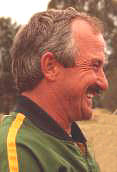 |
| Then
& not long ago |
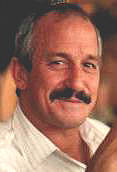 |
|
Gene,
an army sergeant and parachuting instructor, was transferred to Melbourne
in Oct? of 1969 and went to work as an instructor at the Centre.
Gene
first jumped with the Eagles at the Geelong Show on the 16th of October
1969. He was an outstanding member of the Golden Eagles and participated in every
display while he was at Labertouche until he ran foul of the Bald Eagle by
bringing a girlfriend to a display where the team was living in a five
bedroom house with only one bathroom and the girlfriend held up everybody
for more than an hour making up her face and everybody was late for
dinner. Gene was warned not to bring her again but
brought her along to the next display relying on his Sergeant Bilko tongue
to get around the problem. It didn't work and Gene was
banished for three months from displays. |
| Tony Hillman
U
|
Geelong
Show 16/10/69 |
| Dave Tapp
|
Geelong Show 16/10/69 Tyabb
Air Pageant 27/12/70
Lang Lang Rodeo 23/04/73 24/01/71 Tooradin Air Pageant |
Roy Taylor
|
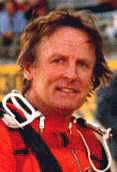
|
|
Then |
|
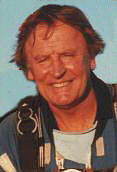
|
|
Kilmore Showgrounds 19/10/69
|
| Russell Jones
|
Kilmore Showgrounds 19/10/69
|
Robert Courtenay
|
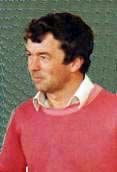
|
|
Then
|
| |
|
Bob
came to the Centre as a foundation member of Monash Skydivers. He became a
parachute instructor but found that his interest in flying did not allow
him time to give both activities the attention required to well in
both. So he chose flying and eventually went into partnership
with another Centre pilot, purchased a Piper Navajo and started a charter
business.
Bob's
first jump with the Eagles was at the Tyabb Airshow
on the 28th December 1969. He enjoyed jumping into Monash
University each time the Eagles had a display there.
He
has had a successful career in aviation and now flies corporate aircraft
in Australia and overseas. |
| Derek Doull
|
2/1/70 Paynesville Sport
Spectacular
|
| Yo Weber
|
2/1/70 Paynesville Sport
Spectacular
|
| Robin Rose
|
24/1/70 Longwarry Rodeo
21/10/1972 Geelong Show
|
Alan Eden
|
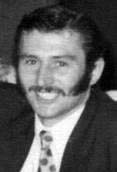 |
|
Then |
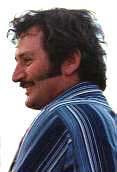 |
|
24/1/70 Longwarry Rodeo
|
| Bruce Towers
|
24/1/70 Longwarry Rodeo - Lang
Lang Rodeo
|
| James Moir
|
24/1/70 Longwarry Rodeo
|
| Rod Wilson
|
15/10/70 Geelong Show
|
| Richard Molony
|
18/10/70 Kilmore Gymkhana
|
| Geoff Thomas
|
22/11/70 Launceston Air Pageant
|
| Hugh Martin
Levorsen
|
10/04/71 Peaches and Cream
Festival Cobram
|
Colin Holt
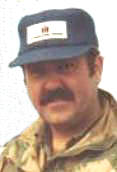 |
| Then |
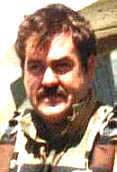 |
|
12/04/71 Lang Lang Rodeo
|
| Michael Golden
|
16/10/71 Geelong show
|
| John Parker
|
17/10/71 Kilmore Races,
Bendigo Show
|
| Leslie-Ann
Martin
|
20/10/1972 Geelong Show
|
| Bill Nicol
|
21/10/1972 Geelong Show
|
| Wendy Stapleton
|
21/10/1972 Geelong Show
|
| Andrew Kerr
|
23/04/1973 Lang Lang Rodeo and
1977
|
|
Noel Weckert
U
|
09/12/1973 Bayswater
|
| Alan Ebel
|
09/02/1974 Edenhope, 17/11/74
Shepparton,
|
| Carol Owens
|
09/03/1974 Tongala (Peaches
and Cream Festival)
|
| Alex McQuibban
|
10/02/1974 Trafalgar
17/03/74 Longwarry
|
| Phillip Kemm
|
10/02/1974 Trafalgar
|
| Ian Nelson
|
17/03/1974 Longwarry
28/09/1977 Horsham Show
13/10/1977 Geelong Show
|
| John Davies
|
17/03/1974 Longwarry, 28/07/74
Monash Uni, 17/10/74 Geelong
|
| Peter Warren
|
17/03/1974 Longwarry, 28/07/74
Monash Uni
|
| Garry Aberdeen
|
17/03/1974 Longwarry, 28/07/74
Monash Uni, 17/10/74 Geelong
|
| Natalia Faine
|
19/10/1974 Charlton
|
| Colin Kemp
|
23/02/1975 Portland
|
| John Dash
|
05/10/1975 Geelong Show
12/11/1977 Dandenong Show
|
| Greg Clutton
|
14/11/1976 Dandenong Show
|
| Sue Walker
|
January 1977 Bright Woodchop.
|
Ken McCleay
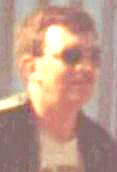 |
|
Then |
| |
|
|
Richard McCooey
|
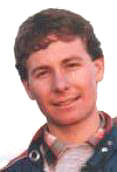
|
|
Then |
| |
|
|
| Malcolm Corp
|
|
| Rob Payne
|
Rob's
first jump was at Labertouche on the ?? of April 1980. |
Col. Sam Smalley
|
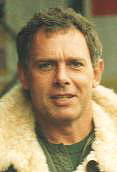
|
| Then |
|
|
Bernard Shaw
|
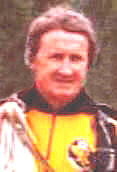
|
|
Then
|
|
|
| Ray Foster
U
|
|
| Art Littlemore
|
Guest
Jumper:
Pambula Show, NSW 3/2/68
|
| Gordon Gecele
|
Guest
Jumper: Willow Grove carnival
01/01/69
|
| Trevor Burns
|
Guest
Jumper: Devenport
Airshow, Tasmania
16/3/69
Geelong Show
20/10/1972
|
| Jan Melrose
|
Guest
Jumper: Geelong Show 18/10/69 |
| Yo Weber
|
Guest
Jumper: Geelong Show 18/10/69 |
Bill
Kenny U
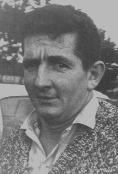 |
| 1965
& 1987 |
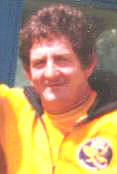 |
|
Guest
Jumper: Bill
was a regular guest jumper with the Eagles. He loved display jumps
and always played to the crowd. He first jumped with the Eagles at
Tyabb Airshow on 28/12/69.
He
had a rapport with the media that did not always work to his advantage.
He once took sick leave from his job to jump in the Australian
Championships in Western Australia. His photograph appeared on
the front page of a Melbourne newspaper reaching for the disc on landing.
He got a telegram from the boss; "Congratulations on your success in
the competition, don't bother reporting upon your return".
On
another occasion he went AWL from work to jump at the Melbourne
Show. The newspapers published a picture of him in their
coverage of the show and he was in deep strife at the building site.
A
building worker and crane driver, wherever possible Bill would jump into
whatever site he was working on. On at least one occasion that was
onto the top of a high rise building in the CBD.
Billy
was true blue Aussie and a staunch unionist. He jumped every
year at the Builders Labourer's Annual Picnic and never missed a skydiving
event or a party.
|
Ian Handley
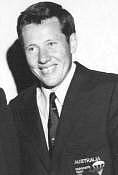 |
| Guest
Jumper |
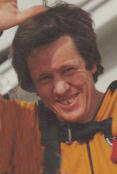 |
|
Guest
Jumper: Ian
was a keen competition jumper and Australian Accuracy Champion in 19??,
19?? etc. He had his own parachuting display act that he
performed at the Sydney Agricultural show. He was a one man
show that started off as a straight jump, then he introduced a moving
target and landed on the pillion seat of a motor cycle with bike in
motion. This developed to a landing in the back of a Utility (Small
truck) and later on the top of a double-decker bus. A
true entrepreneurial showman.
The
Golden Eagles always recognised talent and invited Ian on some of its
bigger displays. His performance was always flawless.
Ian
earned the name "Which Foot" from his accuracy training
technique. When approaching the target disc on accuracy training
jumps he would call out to the ground crew "Which
Foot?". He would get a reply "Left" or
"Right" and he would then strike at the disc with that
foot. Such a technique requires absolute self-confidence
After
Ian gave up competing, he was asked by a cheeky jumper "What's it like
to be a has-been?". Ian replied without hesitation "Better
than being a never-was".
Ian
was a member of the 1972 Australian Parachute Team and competed at the
11th World Parachuting Championships hosted in Tahlequah, North Carolina,
USA.
|
| Ron
Draper
|
Guest
Jumper: Lang Lang Rodeo 23/04/1973
|
Tony Edwards
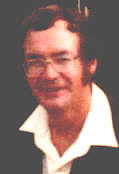 |
| Guest
jumper |
|
Guest
Jumper: Geelong Show
17/10/1974
Tony
was a regular guest jumper with the Eagles. Particularly at country
regional shows.
|
John Middleton
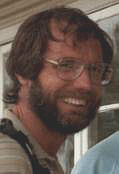 |
| Guest
Jumper |
|
Guest
Jumper: John was mostly involved in football
half-time jumps with the team. |
David Millard
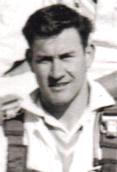 |
| Then
and now |
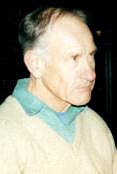 |
|
Guest
Jumper: David
was a guest jumper with Eagle Skydivers and particularly enjoyed jumping
at the Melbourne Agricultural Show.
His
real love was competition jumping and he represented Australia at World as
a competitor and as a Meet Director. He took part in many competitions
at all levels.
On
one occasion, David stole the limelight at a Melbourne Show. He was
approaching the arena at about 500 feet using a classic accuracy technique
and as he turned his five cell ram air parachute towards the arena, one
side of the canopy rolled under and David was back in free fall for a
brief period until the canopy opened again at about 250 feet. This
left him with barely enough height to make it back into the arena and he
had to lift his legs to avoid touching the edge of the grandstand roof as
he flew his canopy straight for the target and made a last second hook
turn to stand up in the centre of the target square.
The
spectators in the north stand had a clear view of all of this and when the
parachute collapsed, there was an audible gasp from the crowd.
When the parachute opened again there was another loud gasp from the crowd
and as David landed the crowd burst into wild applause.
As the Eaglemobile took the team on the "Drive By" around the
trotting track, the north stand spectators showed lots of appreciation for
a good show. Most of them believed that it was all part of the
act. David showed no sign of being perturbed by the
incident, which in fact had been a close shave.
|
| Bill Nichol
|
Guest
Jumper Monash
University 12/8/72
|
| Maury Loney
|
Guest
Jumper: Geelong Show 20/10/1972
|
| Hugh Downie
|
Guest
Jumper: Melbourne Show
17/10/1974
Geelong Show 19/10/1974
|
| Brian Kilpatrick
|
Guest
Jumper: Geelong Show 19/08/1974
|
| Geoff Ashton
|
Guest
Jumper: 16/03/1975
|
| Graham Hill
|
Guest
Jumper: 16/03/1975
|
| Tony Holtham
|
Guest
Jumper: 19/09/1977
Melbourne Show
|
| Colin Streeter
|
Guest
Jumper:
13/10/1977 Geelong Show
12/11/1977 Ballarat Show
|
| John Donahue
|
Guest Jumper:
14/10/1977 Geelong Show
12/11/1977 Ballarat Show
|
| Maggie Taylor
|
Guest Jumper:
12/11/1977 Dandenong Show
|
| Frank Murphy
|
Guest Jumper:
12/11/1977 Dandenong Show
|
| Greg Graham
|
Guest Jumper: 25/03/1978
Dandenong Showgrounds
|
| John Bate
|
Guest Jumper: 25/03/1978
Dandenong Showgrounds
|
|
|
|
|
|
Display jumps after September 1978
|
|
|
|
Adelaide Show
|
4th to 9th September 1978
|
|
West Lakes Football Match Adelaide
|
9th September 1978
|
Melbourne Show
Steve Filak, Ray Williams and Ray Foster
|
22nd to 24th September 1978
|
Ballarat Show
Filak,Tapp and Leth
|
10th & 11th November 1978
|
Dandenong Show
Taylor, Williams, Shaw and Nelson
|
11th November 1978
|
Melton Gift (Foot race)
Taylor, Kenny, Towers and Williams
|
21st January 1979
|
Tyabb Air pageant
Filak, Wilson, Towers, McHugh, Faine &
Taylor
|
17th February 1979
|
Myer Music Bowl Spectacular
Filak, Towers, Kenny and Williams
|
9th of March 1979
|
Monbulk Oval Festival
Williams, Kenny, Bramhill and Tapp
|
10th of March 1979
|
Leongatha Airfield Display
Sprogis, Cameron and Patten
|
18th of March 1979
|
Adelaide Show
Kenny, Kilpatrick and Foster
|
7th & 8th September 1979
|
Melbourne Show (1st
night displays)
Filak, Wilson, Duckworth, Handley, Foster
& Kenny
|
21st to 29th September 1979
|
Geelong Show
Filak, Foster, Kenny, Tapp, Kilpatrick,
Timewell, Kenny
|
18th to 20th October 1979
|
Dandenong Show
Filak, Foster, Kenny, Dash, Shaw, Kenny,
Timewell, Patten, Williams, O'Brien, Henderson, Rath, Kane, Tapp, Taylor &
Lazarus.
|
10th & 11th of November 1979
|
Department of Agriculture Picnic
Wilson, Rath, Faine, Graham, O'Brien,
Lazarus, M.Taylor, Cullen, Stevens, Falconer, Tapp & Stuart.
|
9th December 1979
|
Tyabb Air Pageant
Wilson, Kenny, Foster, Timewell, Kenny
& Morris
|
27th January
1980
|
Check location
Filak, Taylor, Foster and Kenny
|
16th February 1980
|
Melton Gift Footrace
Taylor, Kenny, Taylor, Kenny and Barradel-Smith.
|
17th February 1980
|
Sorrento Beach Picnic
Holt, Patten and Taylor Jnr.
|
5th April 1980
|
Melbourne Show
Filak, Holt, Foster
|
20th September 1980
|
Local Display
Stephens, Cook, Corp, Wyer and Barradell-Smith
|
15th March 1981
|
Monash University Display
Holt, Taylor, McCooey and Corp
|
09/08/1981
|
Narre Warren Fountain Gate Shopping Centre
Taylor, McCooey, Corpse, Butler and
Barrasell-Smith
|
06/10/1981
|
|
|
|
|
